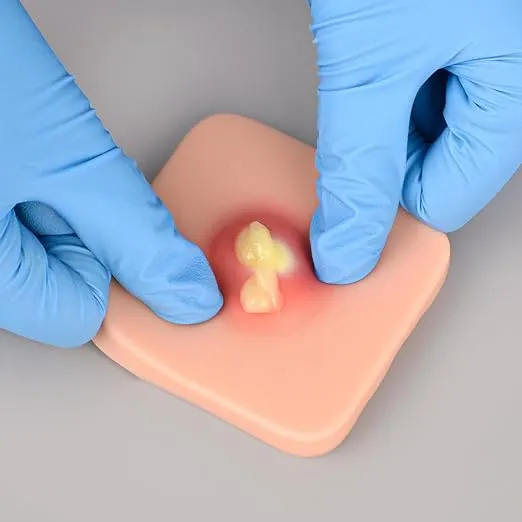What is Incision & Drainage of Breast Abscess?
A breast abscess is a painful collection of pus that forms within the breast tissue due to infection. Incision and drainage (I&D) is a minor surgical procedure performed to treat a breast abscess. It involves making a small cut over the abscess to allow the pus to drain out, relieving pain and clearing the infection effectively.
Incision and drainage is the gold-standard treatment for breast abscesses, providing fast relief and complete recovery when combined with antibiotics and proper wound care. If you notice any symptoms of breast infection, consult your doctor promptly to avoid complications.

Symptoms of Breast Abscess
- Painful lump in the breast
- Swelling and redness over the affected area
- Warmth over the skin
- Fever and chills
- Tenderness on touch
- Nipple discharge (sometimes pus-like)
- General feeling of discomfort or fatigue
Procedure / Treatment
- Diagnosis: Clinical examination and ultrasound confirm the presence of an abscess.
- Preparation: The area is cleaned and sterilised. Local anaesthesia is given to numb the site.
- Incision: A small cut is made over the abscess.
- Drainage: Pus is drained completely from the cavity.
- Irrigation: The area may be washed with saline to clear residual pus.
- Packing or Dressing: Sometimes, the cavity is packed with sterile gauze to keep it open for continued drainage, or a drain is inserted.
- Antibiotics: Prescribed post-procedure to treat any remaining infection.
- Follow-up Care: Dressings are changed regularly, and healing is monitored until the wound closes.
Prevention
- Maintain proper breast hygiene, especially during breastfeeding.
- Ensure complete emptying of the breast while feeding to avoid milk stasis.
- Treat mastitis (breast infection) promptly before it progresses to abscess formation.
- Wear comfortable and well-fitting bras to prevent blocked ducts.
- Stay hydrated and maintain good overall health to boost immunity.
Benefits
- Immediate relief from pain and swelling
- Clears infection effectively, preventing its spread
- Minimally invasive with quick recovery
- Restores normal breast function and appearance
- Prevents complications such as fistula formation or systemic infection
Types
There are no types of I&D as such, but breast abscesses themselves are classified as:
Lactational Abscess: Occurs during breastfeeding due to milk stasis and bacterial infection.
Non-Lactational Abscess: Seen in non-breastfeeding women, often associated with conditions like duct ectasia, smoking, or diabetes.
Treatment for both involves incision and drainage, though ultrasound-guided needle aspiration may be used in smaller abscesses as an alternative in select cases.
